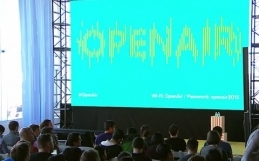Ebay has its own unique set of technical challenges when using machine learning for image and text recognition across more than 800 million items on offer every day. On top of this, like many giant e-commerce platforms, it has also had to approach the matter of how to settle Data Scientists and Researchers into the business as comfortably as possible.
In the line of business this week I had been left wondering how businesses look after practitioners that join organizations direct from academia as against those that come from a commercial engineering background.
Marc Delingat is Senior Director Global Product Experience at Ebay and spoke at the Deep Learning Summit in Boston back in May about how Ebay’s approach to weaving Machine Learning Practitioners into the business sees Ebay treat their Researchers as a fully integral part of product team with responsibility for user experience of their work.
Of equal importance at Ebay is the drive to educate the wider business, especially leadership, about the benefits bestowed in understanding how machine learning systems drive the efficiency of the business, with dedicated speciality teams, to help ensure faster iteration cycles. Delingat explains –
We are trying to really build this into our products, this is not something that Hassan works off in the research team and things don’t ever make it out into live production, so I thought what I could do is share a couple of things of what we have learned on what it takes to make the advances with deep learning and machine learning and how to make those into real live products.
The first thing is really that you need to hire Researchers that can be Engineers and Engineers that can be Researchers, if those two groups are not hand in hand working together and a lot of cases they are the same people, it’s very hard.
You need to give them time to continue to participate in scientific forums so you can’t hire them out of academia, put them in a corporate environment and then expect that they are going to continue to do the excellent work and advance the field as they have in the years before without the connections to the academic research and ongoing other interactions we have, visiting Professors coming (in) with us, we have Interns, you know, a lot of companies that are active in this area know this.
The Researchers also need to stay with their ideas from inception all the way to live/production, they need to become entrepreneurs and they need to make sure that they don’t just throw the research over the fence. They stay with these products and it’s their product as much as the product of the Product Manager or the Engineer or the Interface Designer or the person that has the profit and loss responsibility.
If you are in a start-up, that’s probably relatively easy to do, you’re like 10, 15.. 20 people, of course everything is your product, in large companies a lot of times that gets lost.
The next thing is really that the whole team is responsible so if you encounter a problem, you’re trying to see something, you’re getting some feedback from your customer support team and in our case for example, sellers are wondering if somebody misunderstands a title that we have machine translated, are they then liable if a buyer is not then happy with the purchase.
So you have to address those concerns and that has to go all the way back to the Researcher so the Researcher has to understand these are real concerns that the users of your more intelligent product actually have because the Researcher actually has a chance to do something about it much more than when you try to do this very much later in the whole product development life cycle.
The other thing that I found really critical and I really only learnt this coming out of Product Management and mostly Software Engineering, I really learnt this cooperating with Hassan closely was that we need to take lessons from agile and agile engineering to a research mindset, especially machine learning, you iterate fast, you iterate quickly so you need to have the ability to do that, so you need to remove bottlenecks and you need to have the right support in place for these teams to be able to iterate.
Specifically for us that meant, we have a team of one hundred percent dedicated machine translation specialist, this is not some team somewhere else, they are part of the research team because if you do translation without language specialists that can help you with human judgement and other areas it is really hard to iterate fast.
Of course you also need to have the investment in the engineering systems to be able to build, deploy, train, retrain all your models, which is another things that help you get into this iterative mode.
I’d say the last two things, first of all you’ve got to have a leadership team that understands that and is able to really bring together this team. That is something where, things like this conference, really help educate the leadership team to the potential and I would say the single biggest problem that we’re faced with right now that we’re trying to solve and address is really that the Product Managers and Designers a lot of times don’t have the capabilities in mind when they look at user needs.
So the user has a need, you’re trying to solve a problem for users, if you’re familiar with a design thinking approach, it comes back to what does the user need to define that really well. They then don’t have, in their mind, the option of how do I address that need unless they work closely with people like Hassan or a lot of you guys to address those needs and maybe in completely different ways to what you would traditionally have done.
So that is something we are trying to do is make the Scientists an integral part of your product ideation and discovery phases.




